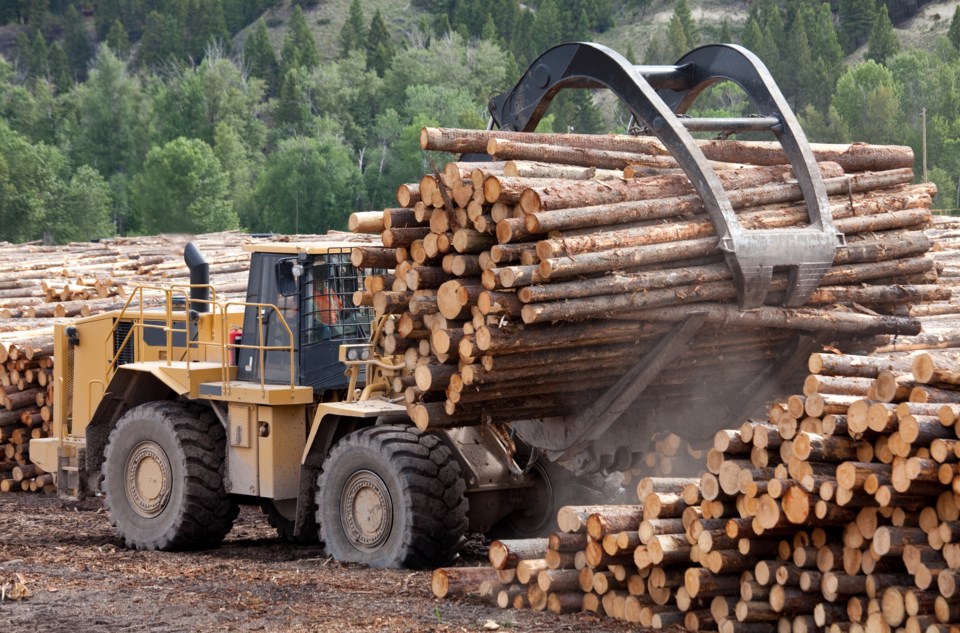An industry leader says both sectors poised to provide solutions to critical issues if the appropriate policies are in place
The agriculture and forestry sectors have a lot in common and should be working together on common goals, says an industry leader.
Derek Nighbor, president of the Forest Products Association of Canada (FPAC), said both industries are strongly grounded in rural Canada and both share unique opportunities that are timely in the current environment.
“As we think about where our food, building products and household products of tomorrow will come from, Canada is in an enviable position globally, given our vast agricultural and forested lands,” he said.
“If the pandemic and the international trade battles our sectors have been through have taught us anything, it’s that our people and supply chains are resilient, and we are well-positioned to provide for Canadians in a world that is increasingly turning inward.”
Most timely right now are natural carbon capture opportunities inherent to both sectors, which include reducing deforestation, improving forest- and grassland-fire management and increasing organic carbon in soil and grasslands.
Canada’s federal climate goals include reducing emissions 40 to 45 percent below 2005 levels by 2030. According to a recent report from the Food and Land Use Coalition, natural climate solutions are expected to be a major driver of emission reduction goals because they are technologically ready and cost effective.
As with the agriculture industry, conversations and projects around carbon capture and storage potential in forestry are currently accelerating, Nighbor told a recent conference on public trust in the food production sector.
“At our pulp and paper mills, we’ve already reduced emissions by a little over 60 percent since the ’90s,” he said, adding there are major opportunities for more progress in the area.
More recently, plans are underway to replace fuel used for lime kilns in pulp mills with local forest residues as part of an ongoing project with Natural Resources Canada.
But the forestry industry, like its agricultural counterparts, has struggled to gain credit for its environmental achievements in the last 10 years and is advocating for this as the federal carbon tax disproportionately affects its stakeholders.
Despite the fact that it has been estimated Canadian farmers could pay approximately $978 million in carbon taxes on natural gas and propane by 2030, a private member’s bill that would provide farmers with an exemption for heating and cooling their barns and drying their grain still has not cleared the Senate.
Similarly, the forestry sector has been hit with much higher operating costs because many of its facilities are based in remote, cold-weather regions that require more energy to operate and face longer distances to markets.
In 2020, the sector paid $83 million in direct carbon taxes and an additional $80 million in indirect costs.
Nighbor said these penalties come despite the fact that the industry has been an early adopter of carbon-reduction and environmentally friendly practices.
“We were on this green track because our foresters and biologists and ecologists had been seeing the change in our forests over time,” he said.
“Wood is 50 percent carbon; dry wood is 50 percent carbon as well. We’re pretty close to saying you can get from a tree what you get from a barrel of oil in terms of our ability to displace more fossil fuel into bio-plastics, bio-pieces, biofuels.”
Another major similarity between the two sectors is the role of public trust, Nighbor said. This is particularly critical in the forestry industry because more than 90 percent of harvesting in Canada is conducted on land overseen by provincial governments.
“There’s not one tree that’s harvested without public community consultation,” he said, adding this includes working with Indigenous communities, accounting for all wildlife and wetlands in the ecosystems and factoring in watersheds.
“Millions of dollars are spent across this country every year just in terms of planning and consultation. The plans then go to the provincial government for approval. Talk about a high test of social licence and public trust.”
However, both industries appear to be strongly poised in terms of public trust. Farmers remain highly trusted by Canadian consumers, according to a recent report from the Canadian Centre for Food Integrity, while more than three-quarters of Canadians currently have a favourable view of forestry and forestry companies.
Nighbor said now is a good time to build on this positive momentum.
“Those of us operating in northern rural remote communities need to work more together,” he said.
“Work together to advocate for smarter federal government policies — especially in the carbon and energy policy spaces — so we can ensure unique rural and northern concerns are addressed and we can get under control the growing cost pressures that our businesses and families are facing.”





